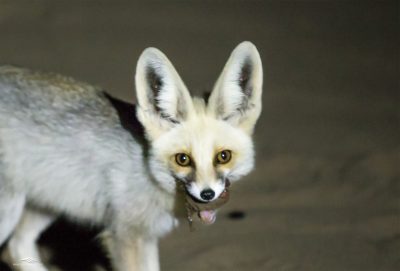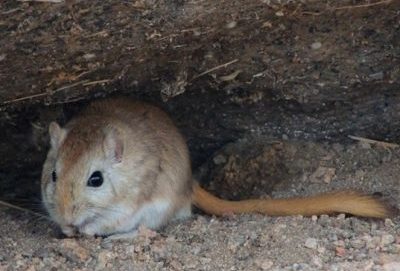Lut desert or Dasht e Lut is Iran’s 1st natural world heritage and a huge desert spreading throughout 3 provinces. Still, the biggest and most attractive part of it belongs to Kerman. Kaluts (or Kalouts) that are considered as one of the main attractions of Lut, are huge yardangs that charm anyone and nowadays many tourists regard it as their highlight of Iran.
Here we try to provide a basic article that covers most of the questions about Kaluts and we will try to make this article into a complete guide of Kalouts over time. Questions such as: what is a Kalut? how to go there? when to go there? what to see? where to sleep? is it safe? what animals are living there? By answering them and your help we will try to make this article into a complete guide of Kalouts over time. That’s why we would love to hear your feedback on this post and we will appreciate it a lot! You can contact us or leave comments below this article.

1. What is a Kalut?
As mentioned above Kalut is what yardang is called in Persian. The word kalut is derived from kalate which means a surrounded town or village in desert and some believe that kalut was actually kal plus lut. Both of these definitions suggest that Kalut means a town among desert; and in this case, a ghost town.
Since there was not a complete study on Kaluts (their vastness and the heat make it into a challenge); we are not sure what happened there; in spite of that, there are some popular theories. The one that makes more sense to us is that once upon a time there was a sea in this part of Iran and after millions of years this sea vaporized little by little. This vaporization led to many rivers and streams of water that were running north to south and these rivers erode the soil and made canyons among them. The next stage is wind; after the rivers vaporized too, the harsh wind that most of the time is blowing north to south is carving these canyons; always and little by little in tens of thousand years.
Finally, now these Kaluts are a huge portion of Lut desert. They can get as high as 155 meters that spread in a vast area of 80×140 square kilometers; in fact, The yardangs are so large and impressive that they can be seen easily from space.


2. How to get to Kaluts
Before; we told you all about how to get to Kerman and now we are going to tell you how to get to Kaluts. If you have a car you can take the root shown in the map and If you are on a budget and don’t mind to see less and spend less time over there you can take a shared taxi from Khajoe Sq. to Shahdad and from there a private one to Kaluts and back. Another option would be to find other visitors to share the cost of the taxi with and hire him to take you to the Kaluts and back. However, keep in mind that by doing it this way you may miss many things and find yourself spending a lot to see more. You can also contact us to book a private car.
However if you seek a better dasht-e Lut experience and a more convenient way to go there we strongly suggest to take a driver-guide who knows about the Kaluts, can take you to all the attractions and give you a better overall image of the place. In addition, you can stay the night camping there to enjoy the famous night sky.
Kaluts Tours?
Check out our complete list of Lut desert tours.
It takes about 2 hours to get to the Kalouts
Khajoo Sq. you can find shared taxi to Mahan and Shahdad here.
3. When to go to Kaluts
Down below we are going to explain when is the best time of year and when is the best time of day to go to Kaluts of Lut Desert: 1. The best times of year to see the Kaluots are early autumn and spring; precisely from mid-October till the end of November and from early April till the end of May. This is when it’s neither too hot nor too cold to enjoining the desert and camping. Moreover, we have to mention that the weather is perfect in winter and you can go for a hike in the day time and enjoy camping at night if you have good equipment. But, in summers it will be too hot to camp and it’s better to go there only for the sunset. 2. The best time of day to be in Kaluts is for the sunset and it’s better to check the sunset and to leave Kerman about 3-4 hours before that for sightseeing, stops and to be there on time.4. What Attractions to See on The Way to Kaluts
Mahan:
If you have time and if you have seen Kerman city already; maybe, it’s better to leave Kerman earlier that we mentioned (3 hours before sunset) and spend couple of hours on the way to see town of Mahan where you can have a cool experience seeing the Shazdeh Garden of Mahan, Shah Nematollah Vali Shrine and Mahan town (the name of Mahan Air airlines derives from the name on this town).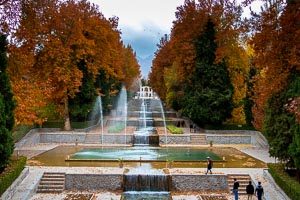 Many considered Shazdeh Garden of Kerman as the ultimate Persian garden.
Many considered Shazdeh Garden of Kerman as the ultimate Persian garden. This shrine is a masterpiece in architecture and has a unique aura.
This shrine is a masterpiece in architecture and has a unique aura.Sirch:
For getting to the Lut desert you have to cross Palvar mountains; and, to do so you have to go up! This will result in very cold weather and it’s surprising that on the way to one of the hottest places on earth you will experience such a great differential in temperature; some times this differential is more than 25ºC. The next destination on your road trip would be the most beautiful village by the name of Sirch where you can easily fall in love (of course with nature :D). Sirch is located in a valley, full of high trees and a huge river is running through it. As a result, it gives the passengers who are crossing the road at the top; a landscape which they will never forget. There is a cypress tree in this village that is believed to has more than 1000 years and along with 2 others in other places are the most important trees in Iran.
By going to Mahan you will add 30min to your Kaluts trip.
Shahdad:
After passing Sirch and the surrounding mountains you are officially in Lut desert. The first major city that you will cross is Shahdad (Shah + dad: given by king) which is an ancient city with a 6000 years old civilization; there have been many excavations near Shahdad and many believe that this region was once the legendary civilization of Arrata. The cistern of Shahdad which we strongly recommend every visitor to go and have a look at is a touristic site with an advanced system of 6 windcatchers, dated back to 200 years ago.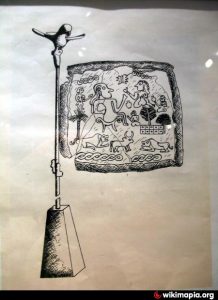 Flag of Shahdad is the oldest in the world.
Flag of Shahdad is the oldest in the world.
Nebka Mounds:
Neba is a natural vase for tamarisks trees which is formed by wind erosion. At first there were only scattered groups of tamarisks trees in a sandy land and since the roots of these trees keep the soil a little damp and hold the soil together; after strong wind all the sands will wash away except the ones around these trees and this phenomenon leads to making hills with trees at top which we call Nebka.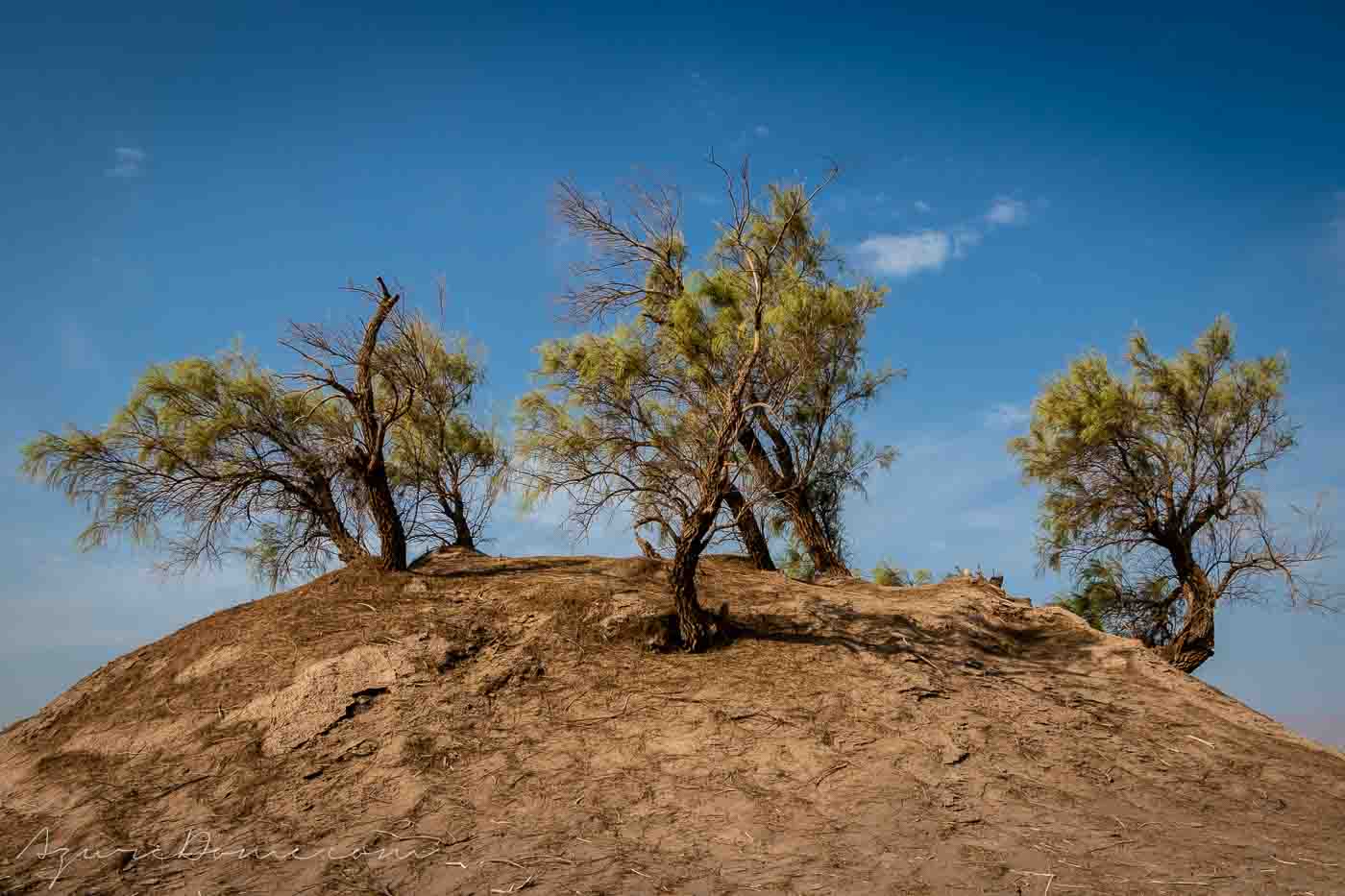
Shafi Abad:
Shafi Abad, like many other villages near Kaluts is there as a result of qanat technology. In almost all of these villages, you can easily trace the qanats and see how the inhabitants can make a living in a dry desert. There are a couple of interesting locations in each of these settlements; locations like old-style houses, caravanserai, palm groves, farms and ruins, and Shafi Abad is famous for its qanat entrance, caravanserai and ecolodges.Qanat:
As you may know by now, most of central Iran is an arid place with little amount of rainfall; therefore, finding water was always a crucial task and many lives depended on it. Iranians came up with a solution about 5000 years ago; qanats! Qanats are a system of underground canals for taking water from point A (e.g. a well on hillside of a mountain) to point B ( e.g. a village in Kavir of Lut). In 2016 UNESCO enlisted The Persian Qanat as an intangible world heritage of Iran. We will post an article about this system soon. Just before the village of Shafi Abad you can reach an entrance to a qanat (although it’s not amoung the 11 qanats that are enlisted by UNESCO) which still has pure running water. Down there, there are two narrow passages that lead to couple of connected galleries and you will be astound by the humidity of that place in midst of a desert.
Qanat of Shafi Abad is located near the main road and beside Lut Ecocamp

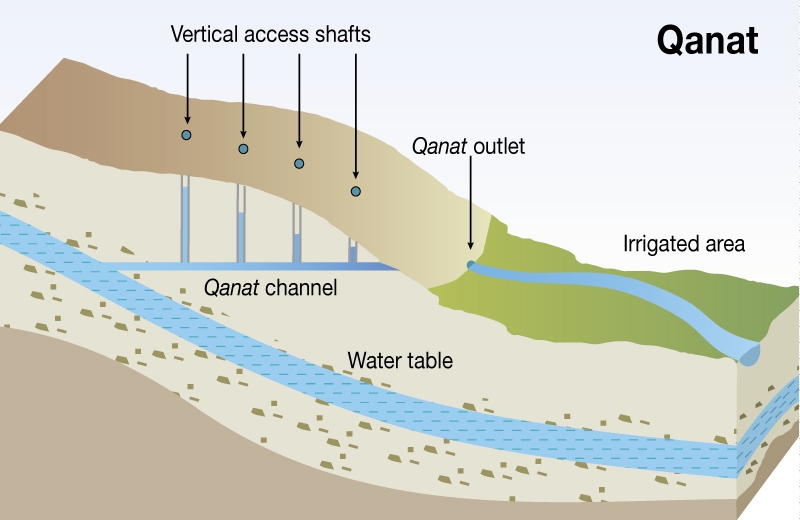
Castle or Maybe Caravanserai:
Another place to visit in Shafi-Abad is its immense castle. Being built in about 200 years ago this place was actually a massive caravanserai where the travelers (or caravans) came to for sleeping. However, the villagers were allowed to take shelter over there in times of threat or attack and that’s why this place has defensive parts such as 4 watchtowers, high walls and a fortified gate.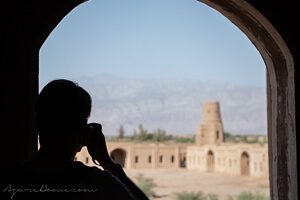
The huge Castle/ Caravanserai in Lut
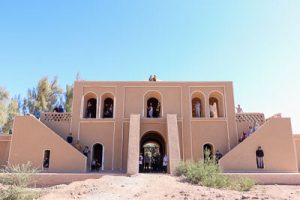
Entrance of the caravanserai
Qanat of Shafi Abad is located near the main road and beside Lut Ecocamp
Salt River
If you continue your course after Kalouts, in about 29 Km you reach Lut desert’s one and only permanent river called “Kal Shur” (salt river). Kal Shure is being feed by mountain of Ravar county in west and after going for about 200km it vanishes into the ground. The landscape of this river in combination with nearby hills, damp white soil and human footprints everywhere makes you feel that you’re walking in a dream.
Salt River on satellite, you can see the intersection of different branches of the river with the road and hills scattered in middle.
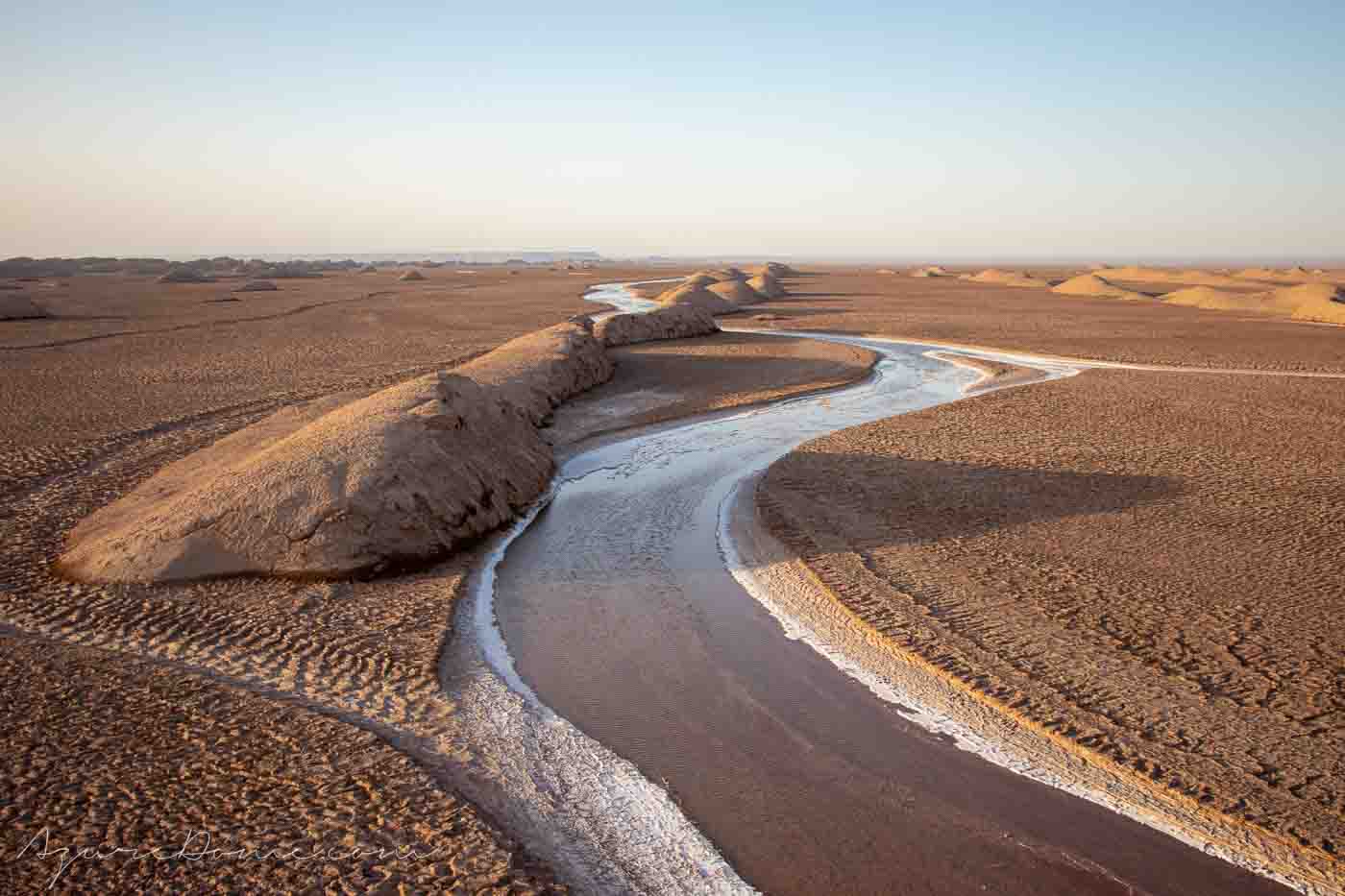
Salt Lake
In early spring 2019, some waves of heavy rain hit Iran and resulted many floods all around the country. Funny thing is; believe it or not, we had many floods in the desert too and the water accumulated in the lowest level of Lut desert caused a surreal massive lake. Some of the egg hills are now submerged in the water and if you look at them from atop they just look like submarines heading to a similar destination. This lake that is located near the Kaluts has been named “Young Lake” or “Salt Lake” by the locals. As it might not be there for the next year we urge all the travelers to not miss this once in a lifetime opportunity to see the Salt Lake of Lut desert in Kerman.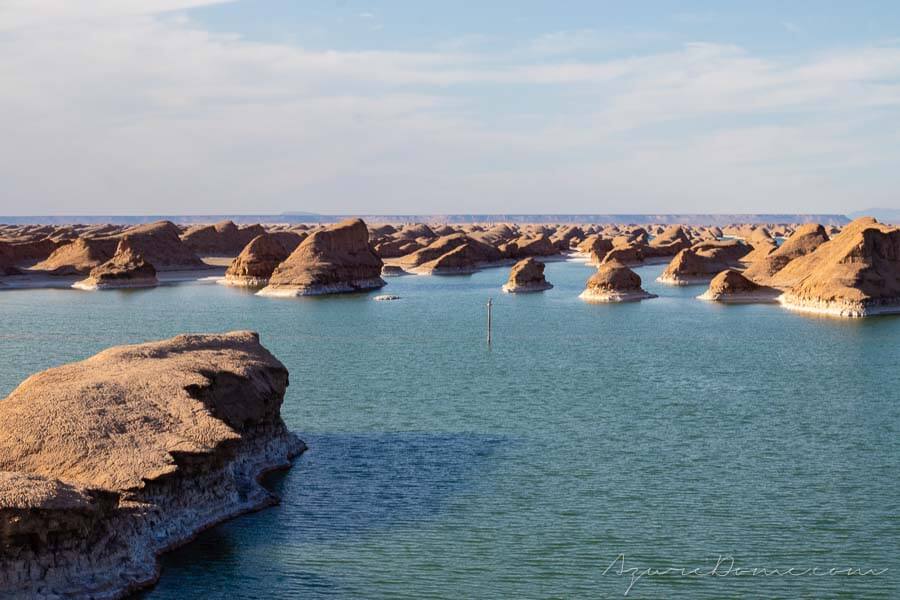
5. Where to Sleep & Stay After Kaluts
This one is a little tough; since it extremely depends on you yourself and the condition of the desert. Some people looooove camping and they won’t change spending a night in a tent while stargazing and enjoying a hot tea with anything in the world; nonetheless, on the other hand, some prefer to have a good night sleep in a clean bed and private bathroom after visiting the Kaluts or maybe to experience the life of locals at an ecolodge; whatever the case, there is a way for you to have a perfect night in Lut desert.Camping:
It is possible to camp in Kaluts but by the law you have to have permission for staying in Lut and you can get thins permission from a tour agency while you are accompany with a tour guide. As you may heard camping in Lut and Kaluts is something really special; The silence, night sky and solitude make you feel that you are the only person on the planet and blessed. Yet, sometimes wind, sand storm and weather make it impossible to enjoy the life style and that why we recommend you to check the forecast before making any decisions. You should pay attention to the temp (it maybe too cold in winters and too hot in summers for sleeping), wind speed and clouds/ dust (if you want to see the night sky). You can book one of our Lut desert tours here.

Ecolodge:
There are couple of villages on your way to Kaluts in Dasht-e Lut and the last of them has about 20 kilometers to Kaluts. If you happened to go there 10 years ago, you could see the main job of the inhabitants was agriculture and all most all of them were working in palm tree farms or growing garlic. In spite of that, on that time, the unfortunate thing was migration of young generation to cities in hope of finding a better job and due to global warming and drought in Iran the villagers were losing their water little by little and this made things even worth! Guess what! Now everything is changed and the migration has diverted. In the recent years more and more tourist are going there and this fact had a huge impact on lives of the locals. They have started to open up all these accommodations that are called “ecolodges” which means a kind of homestay where you go to spend the night with locals as their guest and experience your stay like a local. cool! is’nt it? Most of these ecolodges provide good services; but, we are going to introduce the one that we have been to many times and we loved every moment: Nakhlestan Kavir at Dowlat Abad. This place is running by a Morteza and his family and it was they father land where they leaved and made their living for many decades. However, for the obvious reasons they turn this place to a beautiful home stay with a eye-catching garden where they grow palms, garlic, orange, cactus, herbals and they construct many local traditional rooms all around. You will definitely enjoy living and sleeping like a local over there. Nevertheless they even have these VIP rooms with bed and private bathrooms where you feel more like home. The price which includes dinner and breakfast for each person is about €10. Unluckily they can not speak english; but, you can always ask us to book a room for you 😉 This is Morteza’s number: +98 913 843 8467
Nakhlestan Kavir at Dowlatabad village
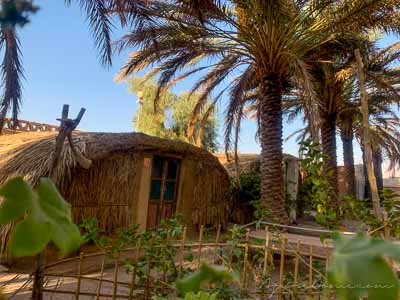
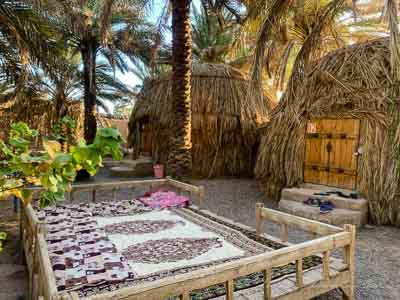
Lut Star Eco Camp:
Lut Star eco camp is your best shot if you look for some place special and as clean as a 4 star hotel. It has opened recently with the intention to install a luxury hotel in midst of desert. All the rooms are huge tents with comfortable beds, tables, refrigerator, private bathroom with shower cabin and even shoe box. In addition, they have a really high standard; the staff are all friendly, welcoming and professional; they speak good english and help is always around. Lut Star eco camp has a cozy coffee shop and restaurant with high quality and pricy service. Furthermore, you can taste many exotic experiences such as a 4×4 to wonder inside the dasht e Lut or a balloon to catch sight of this beauty from the top. Although, all of this make this place the most expensive option around here: the double bed rooms are about €50, the dinner €5 and the 4×4 is about €80. You can contact us for booking.
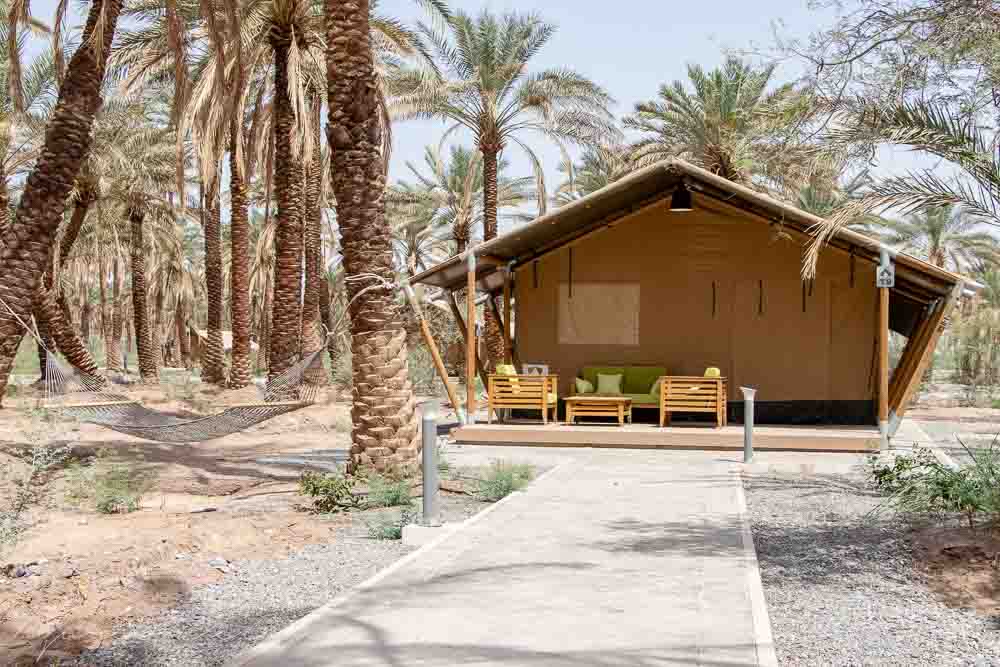
6. The Temperature of Kaluts
Yes, it true: the place is really hot! Yet, if planed wisely one can see most of it and don’t experience the heat (given that you’re not here for the heat!). In summers (July) and around 3-4 p.m. the temperature of Kaluts can get as high as 60˚C easily and in Gandom Beryan even higher; and that’s not all, the coolest temperature in summer time is something around 30-31˚C which makes sleeping over there almost impossible. On the other hand, in winters the hottest temp won’t exceed 35˚C and the coldest won’t usually go downer than 0˚C which is not that cold. Therefore, that’s the best time to pick a hiking activity (or even camel riding) over there.7. Animals of Kaluts
The region has been described in the past as a place of ‘no life’ and information on the biological resources in this area is limited. Nevertheless, Lut has more than 50 different kinds of animals such as sand fox, rabbit, sand cat, chinkara, Persian jird, cheesman’s gerbil, Branford’s jerboa and wolf. Some times, if you’re lucky, during nights you may notice a sand fox coming near the camp in hope of water and food.